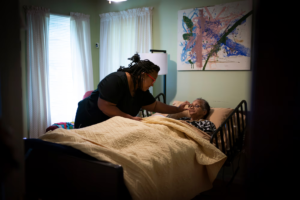Minority youth at high risk of psychosis who live in more diverse neighborhoods tend to have less severe positive symptoms—such as unusual thoughts or grandiose ideas—than those surrounded by less diversity, reports a study in Psychiatry Research.
The researchers found that part of this association was because youth in diverse neighborhoods experience less perceived discrimination and less peer victimization such as bullying.
“Numerous studies have suggested that membership in a minoritized ethnoracial group itself does not confer risk for greater psychotic symptoms, but rather exposures to unequal social environmental conditions, which disproportionately affect underrepresented youth,” wrote Benson S. Ku, M.D., of Emory University School of Medicine, and colleagues. “Our study contributes to the social determinant model of psychosis risk … shedding light on how marginalized youth might be influenced by various interlinking neighborhood and individual factors.”
Ku and colleagues used data from the North American Prodrome Longitudinal Study Phase 2, a large cohort study aimed at improving the prediction of which high-risk individuals may develop psychosis. Their analysis included 492 at-risk youth and 136 low-risk youth, with an average participant age of 18; 45% of the youth identified as an ethnoracial minority.
The researchers found that among ethnoracial minority youth at high risk of psychosis, average positive symptom severity decreased as neighborhood diversity increased—independent of neighborhood socioeconomic status. Diversity was assessed with the Simpson’s Diversity Index, which measures the probability that two people in a community chosen at random will be from different racial and ethnic groups. The association between diversity and positive symptoms was not found for at-risk White youth.
In exploring potential explanations, Ku and colleagues identified peer victimization and perceived ethnoracial discrimination as factors that mediated about 15% of the association between neighborhood diversity and positive symptom severity.
“Perhaps chronically feeling ‘different’ or being ‘othered’ in less diverse neighborhoods, along with experiencing greater victimization life events, may shape individuals’ maladaptive coping mechanisms and core beliefs and affect their social interactions with others,” the researchers wrote. “This … may lead to maladaptive social behaviors (social isolation and self-defeated attitudes) and, in turn, contribute to worsening distress and psychotic symptoms.”
For related content, see the Psychiatric News article “Review Examines How Racism May Increase Psychosis Risk.”
(Image: Getty Images/iStock/Vanessa Nunes)
Source: https://alert.psychnews.org




